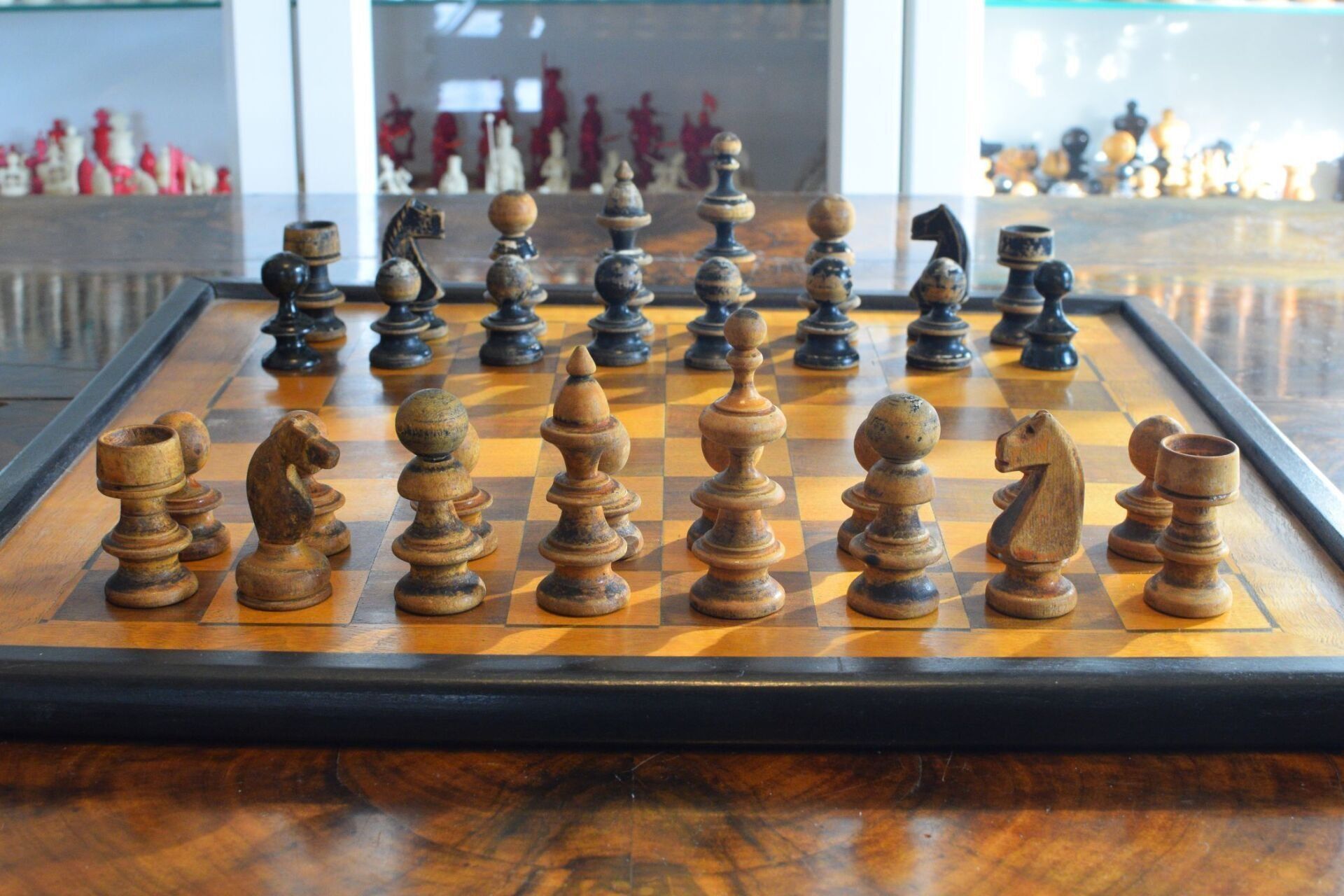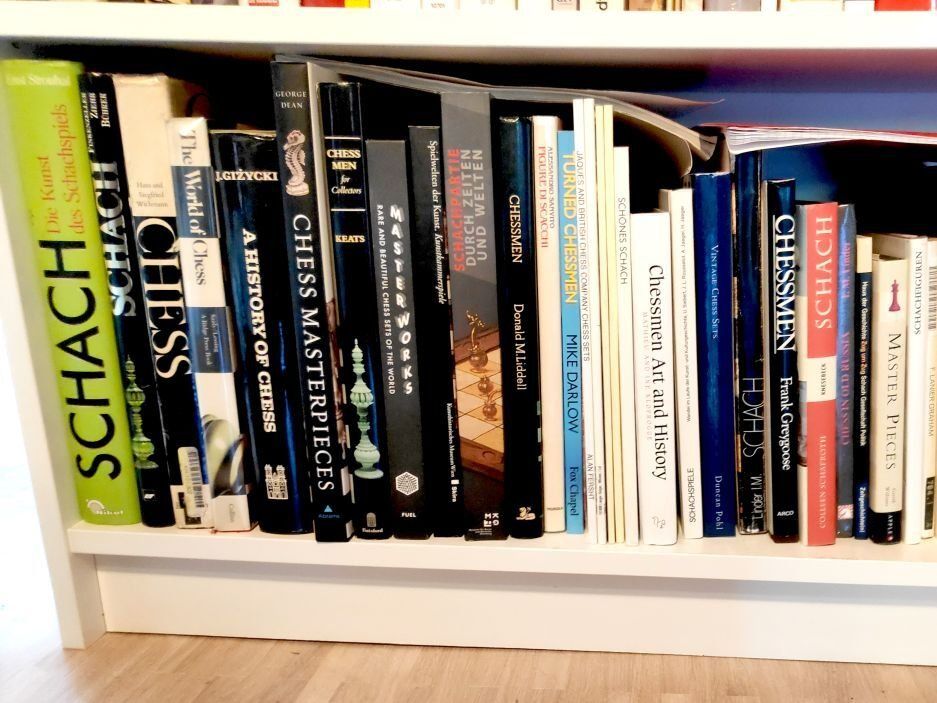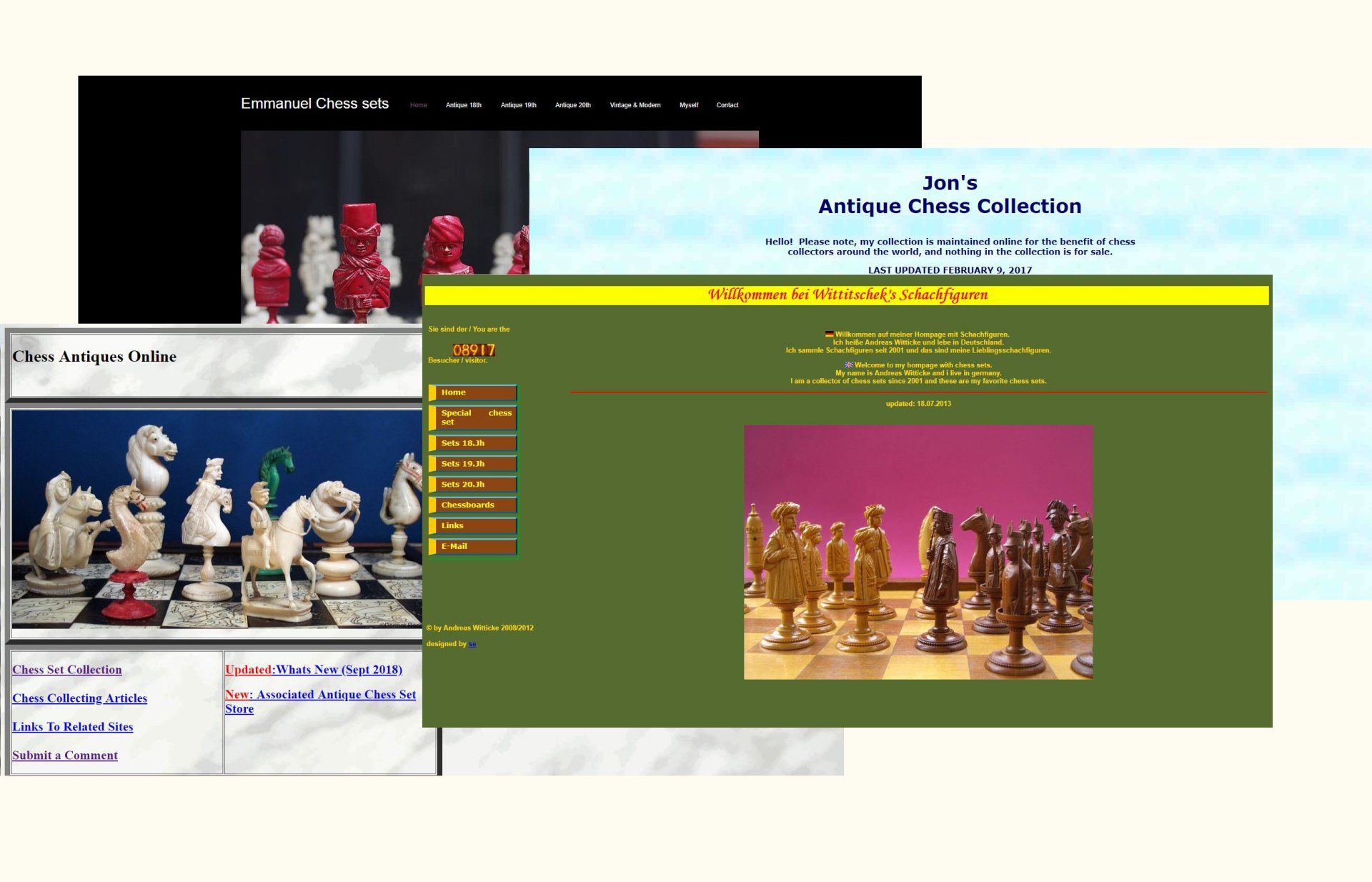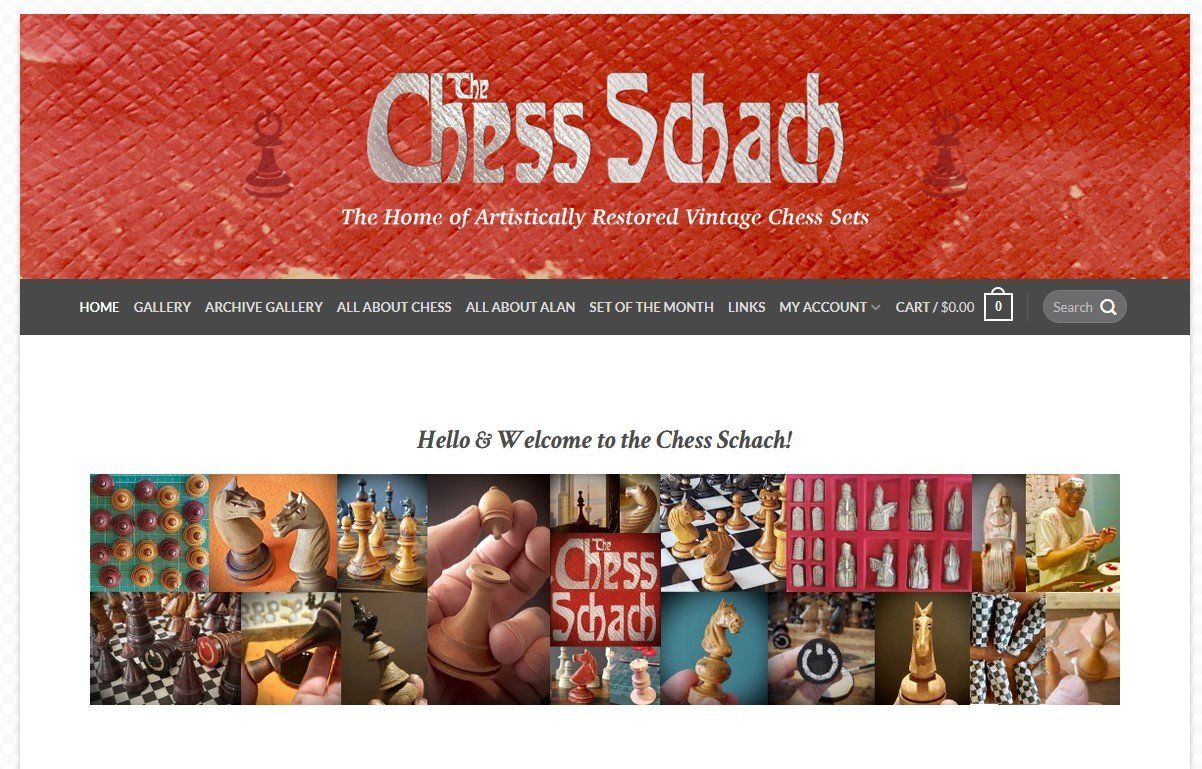Philippine "María Clara" Folklore Set, ca. 1960
A wooden Folklore chess set from the Philippines, ca. 1960. According to a very well researched article by Jim Joannou in The Chess Collector Vol. XVIII No 2.2009 entitled "Chess sets of the Philippines. Part 2. Folklore and Tribal sets (Central & North Islands)" this type of chess set was inspired by the Philippine national hero, Jose Rizal, who lived from 1861-1896. If you ever visit the Philippines, especially Manila, and within Manila in particular the old quarter Intramuros, you will see that Jose Rizal is virtually everywhere. Streets and schools are named after him and one of the most popular first names in the Philippines is Rizalino. Rizal wrote two main novels, one of them being "Noli Me Tangere" (Touch Me Not). The female protagonist in this novel is a girl called María Clara. She is a mestiza, because even though she is raised as the daughter of Captain Santiago de los Santos and his wife Doña Pía Alba, both being native Filipinos, she discovers later in the story that her real father is a Spanish friar, Padre Dámaso, who coerced Doña Pía Alba into illicit sexual relations. The main protagonist of the novel is Juan Crisóstomo Ibarra y Magsalin, the son of Don Rafael Ibarra and the childhood sweetheart and fiancée of María Clara.
These main characters are depicted in the chess set, Crisóstomo Ibarra being the King and María Clara being the Queen. Crisóstomo Ibarra is wearing a Barong Tagalog, an ornamented shirt, and a Salakót, the traditional wide-brimmed hat. At their side is a Catholic style Bishop with mitre and cross, but it is not quite clear, if this shall represent Padre Dámaso, who himself was only a friar. The Knight is depicted as the head of a water buffalo, the rooks are depicted as traditional Philippine Nipa huts.
According to Jim Joannou these sets originate from the Batan Islands in Batanes Province, which is the smallest and northernmost province in the Philippines. The white pieces are made of a local mellow wood, perhaps Narra (Red Sandalwood) or Acacia, and the black pieces are made of Kamagong. The pieces are felted with red felts typical for Philippine sets.















